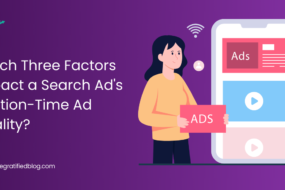
In the dynamic realm of modern marketing, enterprises are always looking for inventive methods to engage their desired audience and elevate their brand presence. One such powerful strategy that has gained significant traction is sponsorship marketing. From sports events to influencer collaborations, sponsorship marketing offers many opportunities to showcase brands, engage audiences, and drive business growth.
This in-depth guide extensively explores the realm of sponsorship marketing, its diverse forms, its benefits, and the strategies that ensure success in this competitive landscape.
Whether you’re a seasoned marketer looking to refine your sponsorship initiatives or a business owner keen on tapping into this potent marketing avenue, this blog is your roadmap to unlocking sponsorship marketing’s full potential.
Definition Of Sponsorship Marketing
Sponsorship marketing refers to the strategic partnership between a brand (the sponsor) and an event, individual, or organization (the sponsee) with the aim of mutual benefit.
This collaboration involves the sponsor providing financial or in-kind support in exchange for brand visibility, exposure to a target audience, and the opportunity to align with the sponsee’s values and image.
Importance Of Sponsorship Marketing In Today’s Business Landscape
In today’s highly competitive business landscape, sponsorship marketing has emerged as a critical driver of brand awareness, customer engagement, and market differentiation. It enables brands to connect with a narrowly defined audience by association with events, influencers, or causes that resonate with their target market.
Additionally, sponsorship marketing will enable brands to showcase their values and commitment to social responsibility, fostering deeper connections with consumers who prioritize ethical and socially conscious brands. Overall, sponsorship marketing has become essential for businesses to amplify their brand reach, enhance their reputation, and drive meaningful customer connections in a crowded marketplace.
Now that you understand sponsorship marketing and its significance in today’s business landscape let’s delve into its various types and advantages.
Types Of Sponsorship Marketing
- Sports Sponsorships involve partnering with sports teams, leagues, or events to increase visibility among an enthusiastic fan base. Brands often sponsor sports to increase visibility, associate themselves with a particular sport’s values or lifestyle, and reach a demographic that aligns with their target audience. For example, a sports apparel company sponsors a major tennis tournament to showcase its products to tennis enthusiasts worldwide.
- Event Sponsorships: Event sponsorships entail supporting and associating with specific events, such as conferences, festivals, or trade shows. Brands leverage event sponsorships to enhance brand visibility, engage with attendees, and showcase products or services in a relevant context. For instance, a technology company is sponsoring a tech expo to demonstrate its latest innovations and connect with industry professionals.
- Influencer Sponsorships: Influencer sponsorships involve collaborating with social media influencers or content creators to advertise products or services to their audience followers. Brands leverage influencer sponsorships to tap into the influencer’s audience, benefit from their credibility and reach, and create authentic connections with consumers. For example, a beauty brand is partnering with a famous beauty influencer to launch and promote a new skincare line.
- Cause-related Sponsorships: Cause-related sponsorships focus on supporting charitable causes, nonprofit organizations, or social initiatives. Brands engage in cause-related sponsorships to demonstrate corporate social responsibility, build goodwill, and align by associating with causes that align with their values and appeal to their target audience. For instance, a beverage company is sponsoring a clean water initiative to support needy communities while promoting its sustainability commitment.
- Content Sponsorships: Content sponsorships involve sponsoring digital or traditional media content, such as podcasts, webinars, or TV shows. Brands use content sponsorships to reach a specific audience interested in the content’s topic, align with relevant themes or messages, and leverage the content’s reach and engagement. For example, a financial services company sponsoring a finance podcast to educate listeners about investment strategies and promote its services to a financially savvy audience.
Benefits Of Sponsorship Marketing
Enhanced Brand Visibility and Awareness:
Sponsorship marketing provides brands with increased visibility and exposure to their target audience. By associating with popular events, influencers, or causes, brands can extend their outreach to a broader audience and create brand awareness. This heightened visibility helps capture the attention of potential customers, build brand recognition, and stay top-of-mind in competitive markets.
Targeted Audience Reach:
Sponsorship marketing allows brands to effectively target specific demographics or market segments. By selecting sponsorships that align with their target audience’s interests, values, and behaviors, brands can engage with consumers more likely to be interested in their products or services. This focused strategy improves the efficiency of marketing endeavors and increases the chances of conversion and customer retention.
Positive Brand Image and Association:
Associating with reputable events, influencers, or causes can positively impact a brand’s image and reputation. Sponsorship marketing enables brands to associate themselves with values, lifestyles, or initiatives that resonate with their audience, creating a positive association in consumers’ minds. This association can enhance brand perception, build trust, and differentiate the brand from competitors, leading to stronger customer loyalty and advocacy.
Opportunities for Experiential Marketing:
Sponsorship marketing often provides opportunities for experiential marketing, where brands can engage consumers in memorable and interactive experiences. Whether through onsite activations at events, collaborations with influencers for experiential content, or cause-related initiatives that involve community participation, experiential marketing creates emotional connections with consumers, fosters brand engagement, and encourages word-of-mouth promotion.
Now, let’s explore the strategies and successful instances of sponsorship marketing.
Strategies For Successful Sponsorship Marketing
Define Clear Objectives:
One of the foundational strategies for successful sponsorship marketing is to define clear and specific objectives. These objectives should be consistent with your broader marketing objectives and contribute to the success of your brand.
Whether you aim to increase brand recognition, elevate sales, enhance brand image, or engage with a specific target audience, clearly defining these goals will guide your sponsorship decisions and ensure your efforts are focused and measurable.
Choose the Right Partnerships:
Selecting the right sponsorship partnerships is crucial for success. Consider factors such as the sponsorship’s relevance to your brand and target audience, the reputation and credibility of the sponsee, the reach and engagement potential of the sponsorship opportunity, and the alignment of values and objectives between your brand and the sponsee.
By choosing partnerships that resonate with your brand identity and goals, you can maximize the impact of your sponsorship marketing initiatives.
Activation and Engagement:
Activation and engagement strategies are essential for effectively leveraging sponsorship opportunities. Develop creative and engaging activation plans that bring your sponsorship to life and connect with your target audience.
This may include experiential marketing activations at events, interactive content collaborations with influencers, digital campaigns leveraging the sponsorship partnership, or community engagement initiatives tied to cause-related sponsorships. The crucial aspect is to craft memorable experiences that connect with consumers and drive brand affinity.
Measure and Analyze Performance:
Measuring and analyzing the performance of your sponsorship marketing efforts is critical for evaluating ROI and optimizing future strategies. Define key performance indicators (KPIs) aligned with your objectives, such as brand visibility metrics, audience reach and engagement metrics, sales impact, brand sentiment, and customer feedback.
Use data analytics tools and platforms to track and analyze performance data, gain actionable insights, and use data-driven insights to improve the efficiency of your sponsorships.
Build Long-Term Relationships:
Building long-term relationships with your sponsorship partners is essential for sustained success in sponsorship marketing. Beyond the initial sponsorship period, nurture and strengthen relationships with sponsees, influencers, event organizers, or charitable organizations.
This may involve ongoing collaborations, partner loyalty programs, co-branded initiatives, and continuous communication and support. By fostering long-term relationships, you can unlock new opportunities, maximize the value of your sponsorships, and build a strong network of strategic partnerships.
Successful Campaign Of Sponsorship Marketing
PepsiCo and NFL
The content highlights PepsiCo’s successful sponsorship marketing strategy, particularly its collaboration with the NFL Super Bowl. Despite a substantial marketing spend, PepsiCo’s investments in the Super Bowl have proven highly effective due to strategic partnership choices.
By sponsoring the Super Bowl halftime show, PepsiCo expanded its brand reach and product promotion opportunities, benefiting the NFL by enhancing its appeal. This long-term collaboration has strengthened PepsiCo’s connections with consumers and event organizers, showcasing the power of mutually beneficial sponsorships in building brand visibility and audience engagement.
Coca-Cola and the Olympic Games
The content showcases Coca-Cola’s successful sponsorship strategy during the 2016 Rio Olympics through the #ThatsGold campaign. Unlike typical sponsorships focused on brand exposure, Coca-Cola’s campaign targeted teens through a comprehensive social media strategy featuring influencers, musicians, and Olympic athletes.
This approach resulted in an 88% accuracy rate in targeting teens and reached 77% of Brazil’s teen population, with over 30 million video views. The campaign’s message of celebrating life’s ‘gold moments’ resonated widely, emphasizing inclusivity and positivity beyond athletic performance.
Conclusion
Given your understanding of sponsorship marketing, why not incorporate these techniques into your marketing strategy? Leveraging sponsorship opportunities can enhance brand visibility, engage with targeted audiences, and build positive brand associations. By carefully selecting partnerships, you can maximize the impact of sponsorships on your brand’s success. Try it today and see what results it can drive for you.
However, if you still have any questions related to the blog, please feel free to leave them in the comment section below. We will be happy to answer them.
Thansk for reading 🙂








No Comments